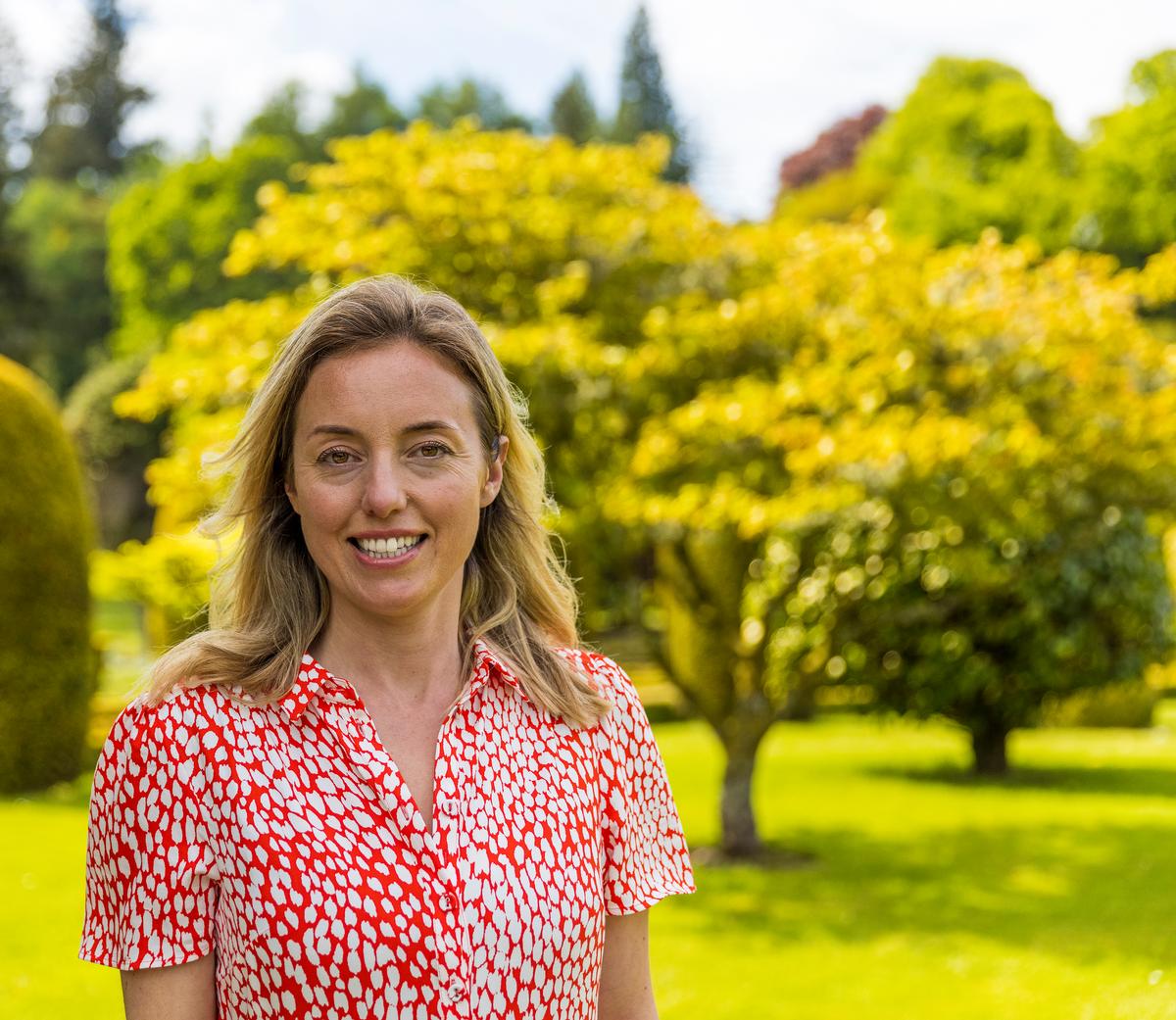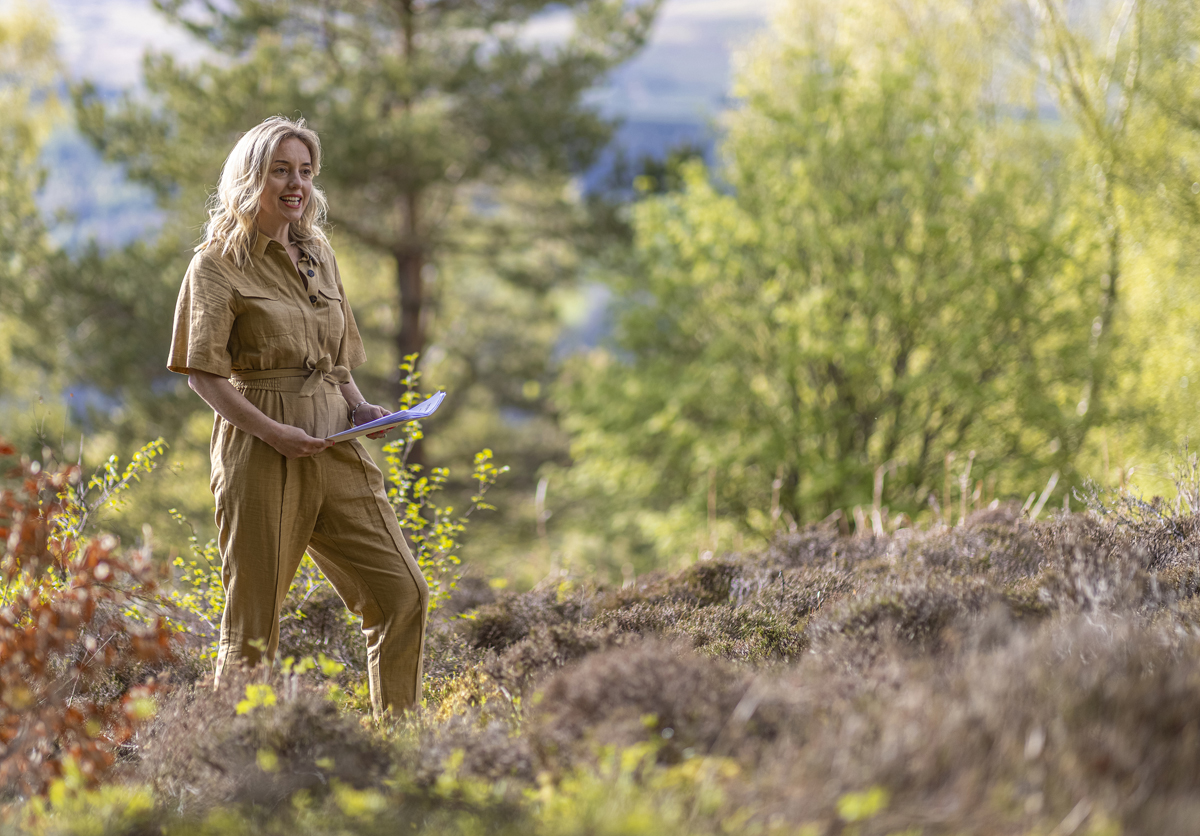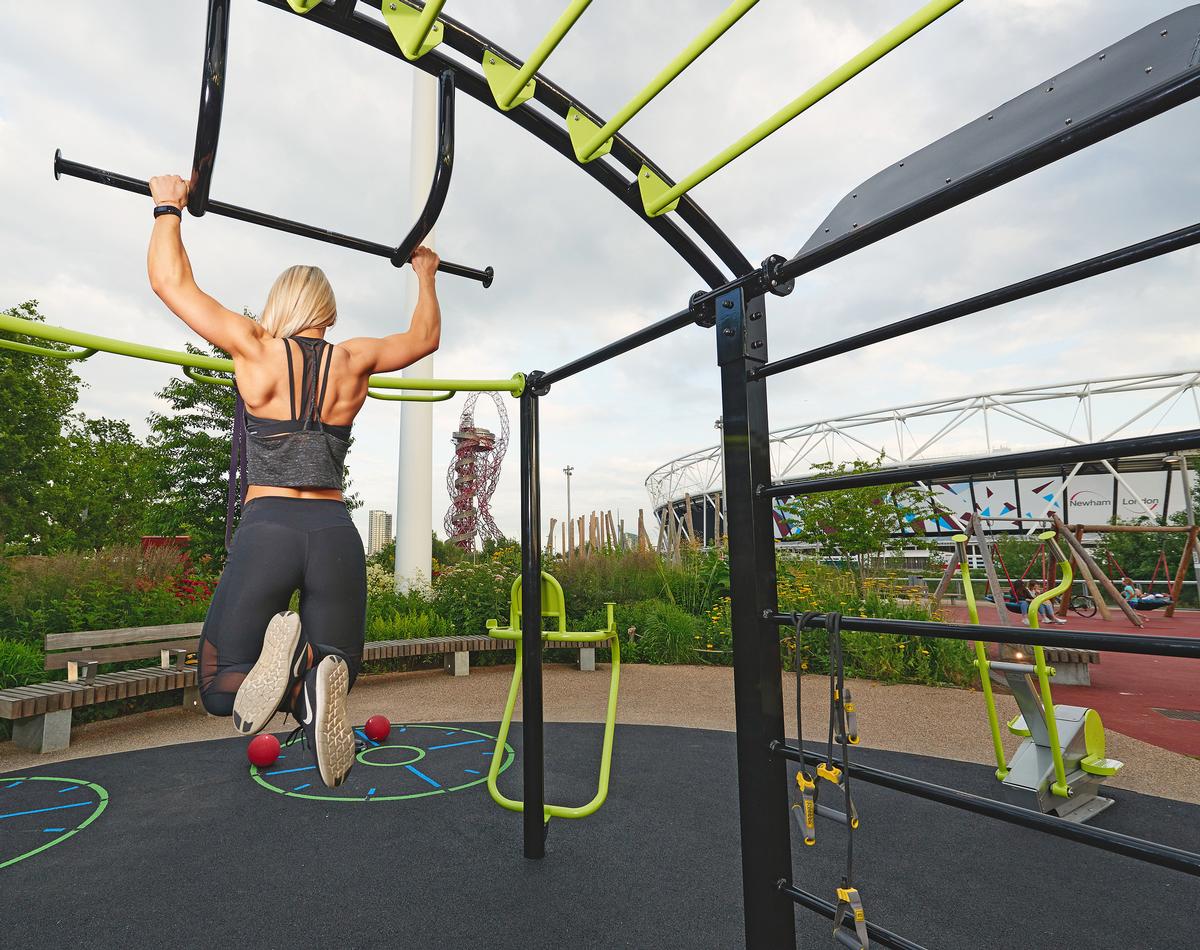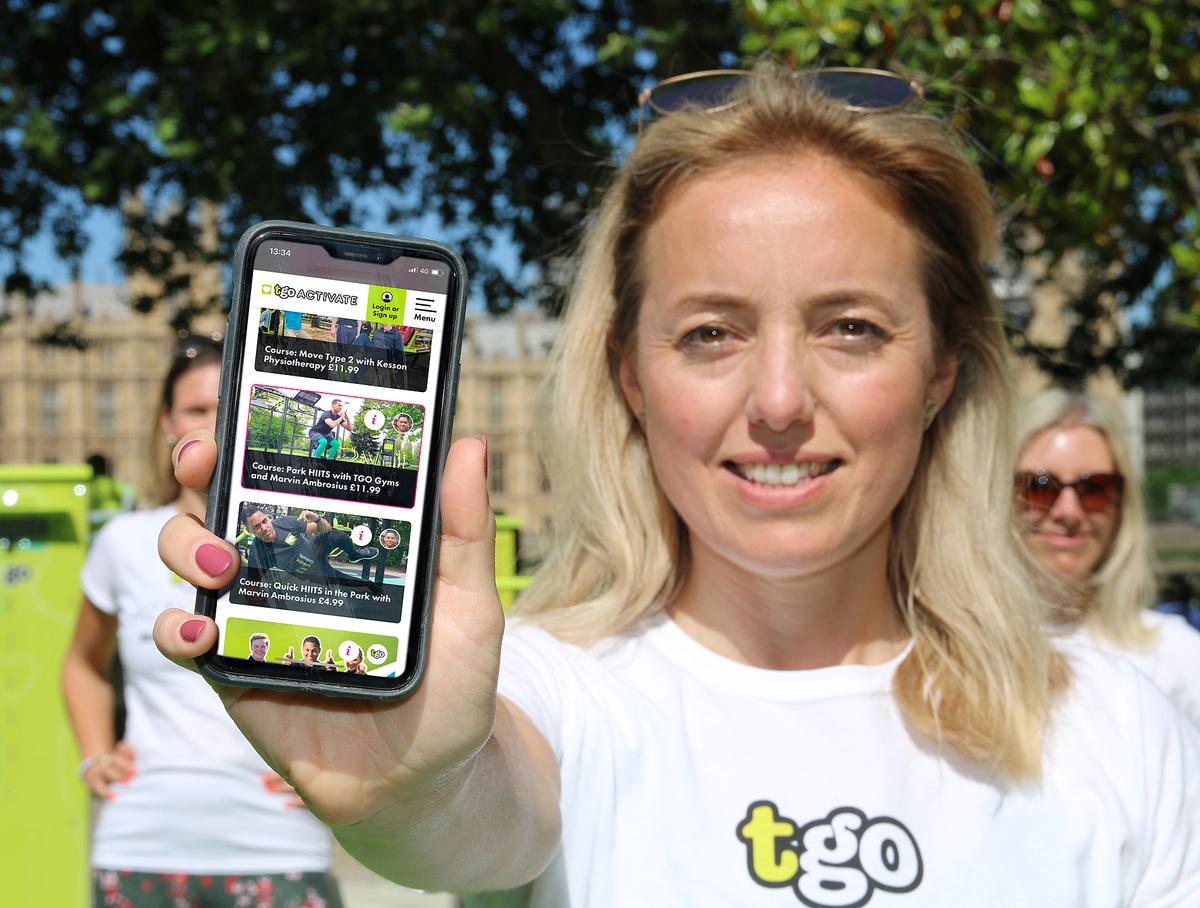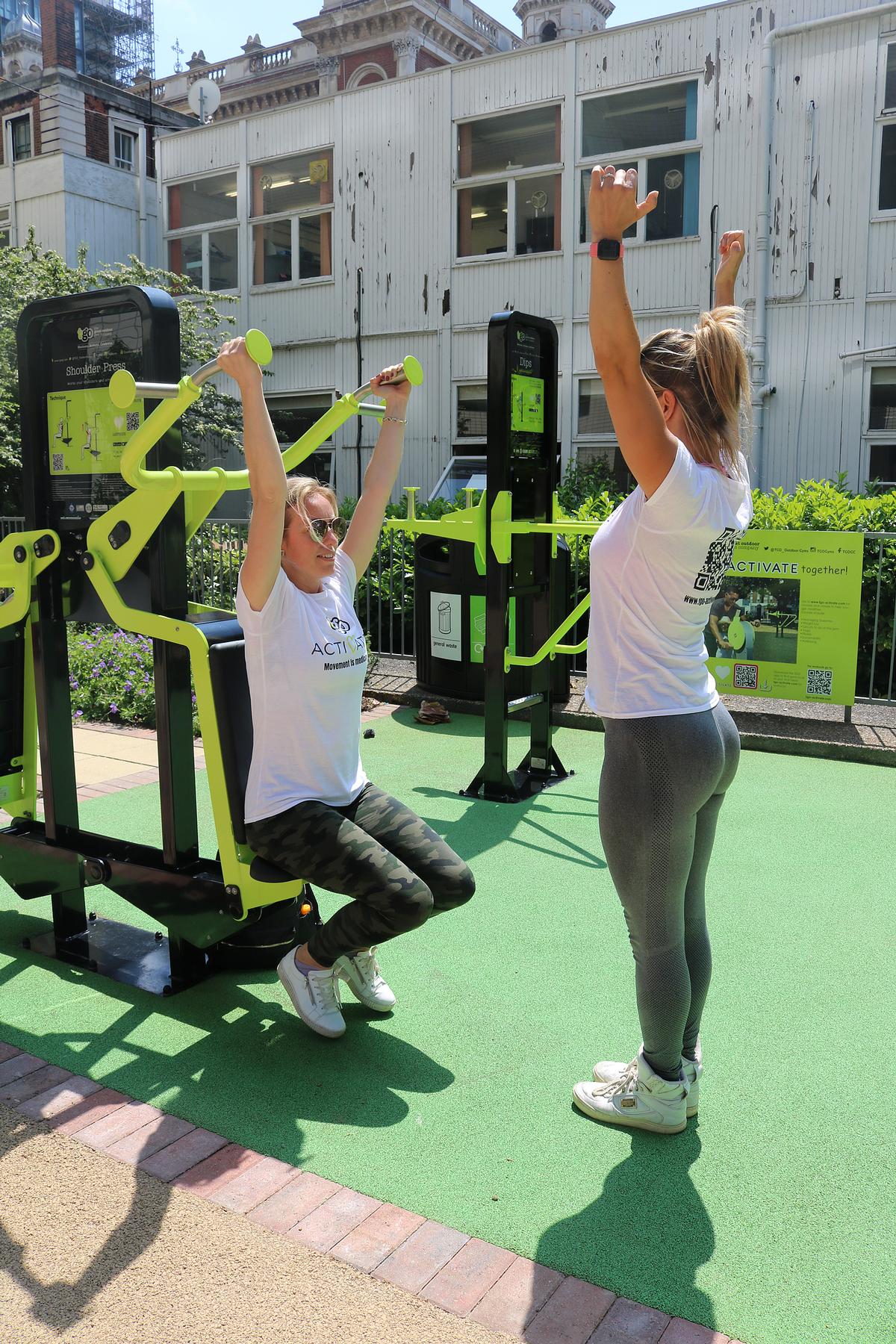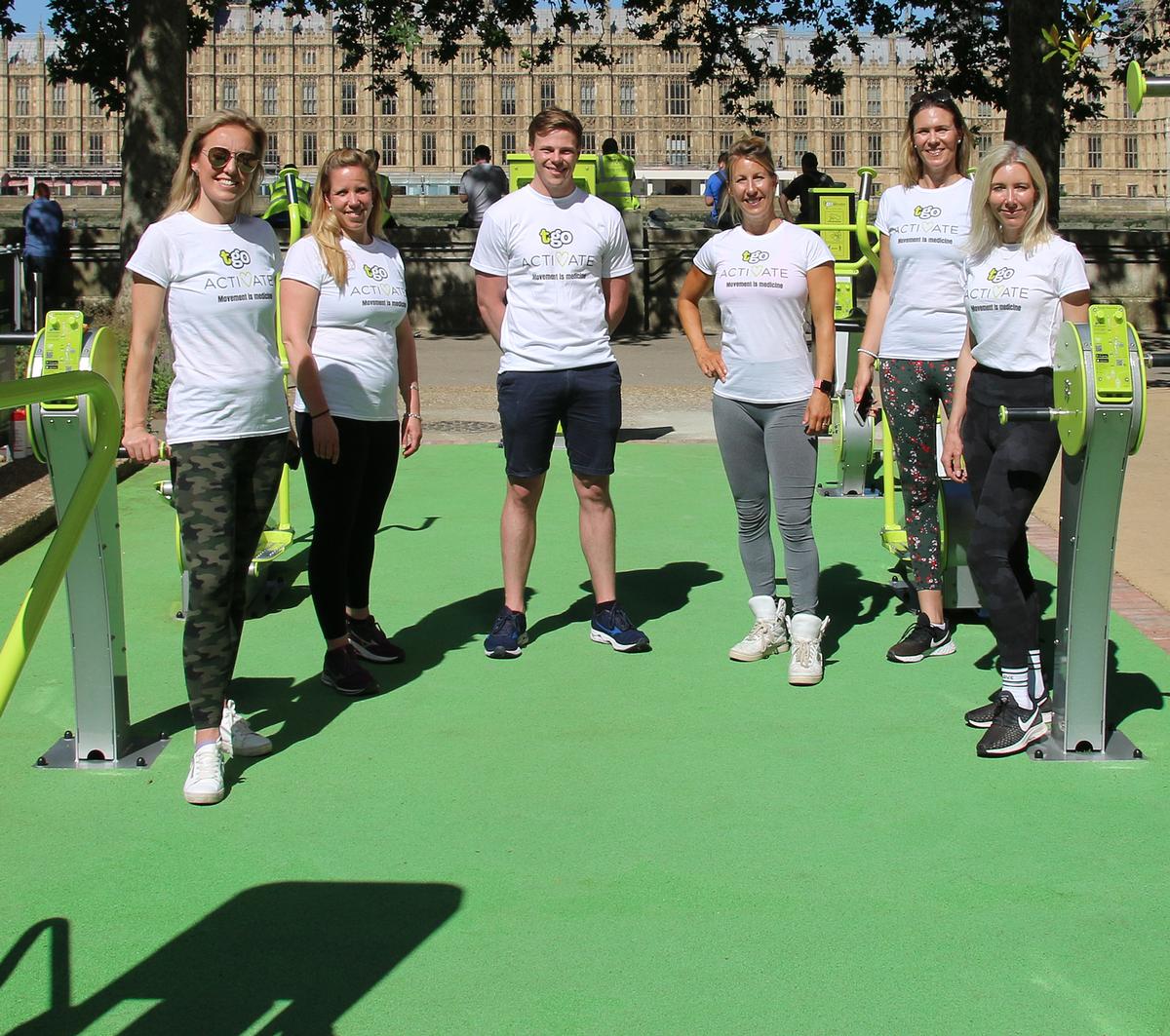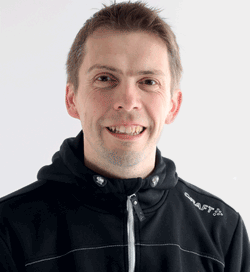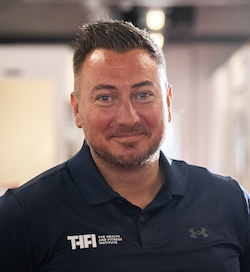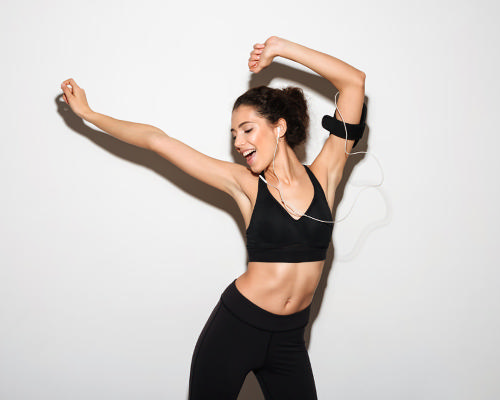You founded TGOGC in 2007 with your father John and husband Matt. What was the vision?
London had won its bid to host the Olympic Games just a couple of years before, so at the time, our vision was very much focused around getting the nation active in the run-up to London 2012. We wanted our gyms to be part of the Games’ Legacy.
We had an amazing boost for a small company when Adidas sponsored our first five Olympic-branded gyms. This was followed by securing government funding to roll out another 70 Adizones across England between 2008 and 2012.
During that time, we invested in R&D and moved our manufacturing to the UK. The basic concept for these outdoor gyms came from China – where they had helped drive a 1 per cent per annum rise in physical activity levels following Beijing 2008 – and we originally manufactured over there, but we wanted to improve the quality.
Manufacturing in the UK increased our cost threefold, but it wasn’t about profit. We wanted to build a trusted brand with safe, inclusive, best practice equipment. Quite simply, moving manufacturing to the UK was the right thing to do – something that’s been a key theme of the company since its inception.
My father, who was chair for 12 years, also encouraged me – as head of design – to establish standards for outdoor gym equipment and I created these from an amalgamation of playground, IFI (Inclusive Fitness Initiative) and indoor training standards.
How has the equipment range evolved?
We launched the second, now UK-manufactured edition of our equipment in 2009, which was a step on from the Chinese kit not only in terms of quality, but also in range: our equipment felt much more like the kind of thing you’d find in a gym, with cardio and resistance options, good ergonomics and so on.
As part of the move back to Britain, we also looked at improving our cardio range and had a lightbulb moment: this was popular equipment, getting a lot of usage, and we realised we could harness human power to generate energy. By 2012, we were rolling out gyms with energy-generating elements built into them.
Power Smart – our newest range – is the next evolution of this, where you can now vary the resistance. We’re also launching an interesting range of weights – the Street Barbell – which isn’t manufactured by us, but for which we have the exclusive distribution rights. And we’ve launched new kit along the way such as rigs, pull-up bars, assisted pull-ups and so on.
We’re constantly pushing our quality up, evolving and redesigning our equipment, and have been open to innovation at every step of the way. For example, in 2017 we collaborated with recycling charity TerraCycle to make two gyms out of recycled aerosol cans, each with a rig in the middle and four pieces of power-generating kit. One now sits in the Queen Elizabeth Olympic Park, the other outside Right Guard’s headquarters near Hemel Hempstead.
We’ve also had to create new processes for export markets such as the UAE and Australia, where coastal locations require highly durable, galvanised equipment.
Who are your customers?
Overseas, our sales partners work with everyone from councils to consultants and architects responsible for designing new landscapes.
In the UK, our customers are predominantly local authorities, although not exclusively. We recently opened a gym at St Thomas’s Hospital in London, for example, which was inspired by one of the nurses there who is also a PT.
We see this project – a hospital so clearly recognising the importance of movement for physical and mental health – as a major milestone. Because, while WHO is telling us we must move more and the CMOs talk about movement as a wonder drug, in everyday practice the healthcare sector still doesn’t see activity as being part of its landscape – even though everyone recognises lifestyle as a major factor in non-communicable disease. It’s why ‘Movement Medicine’ is one of our straplines and an agenda we want to drive forward.
We’ve also worked very symbiotically with leisure operators before now, placing outdoor gyms in front of leisure centres, for example. We very much see ourselves as part of a collective funnel that draws people into health and wellbeing. We all have to work together to get more people more active.
We’re keen to always have a free element to our gyms, but we’d be open to collaborating with leisure operators on paid-for concepts too, where on-site trainers could offer advice and run sessions. There’s definitely value in that model.
Who uses your outdoor gyms?
We focus first and foremost on inactive people, helping them start a journey by providing free access to our facilities. We get people with health issues, families, people from ethnic minorities, people who haven’t used – and often can’t afford to join – an indoor gym.
It isn’t even about fitness at first. We start where people are, addressing their pain points – whether that’s disease, obesity, a stressful family life, financial issues – and giving them a pathway to move away from that, a route to heal and become a force for good in their own lives.
It’s a step-by-step process and something we’re going to develop further in the Fit for 2030 framework we’re working on at the moment – a framework that will offer people easy, tangible steps towards a happy, healthy lifestyle.
We also aim to make it as convenient and straightforward as possible for people to take these steps, and we’ll continue to work on our user experience design to make it even more so – with improved designs and more information on how to use our gyms.
We’re still a small company: we’ve turned over £35m since we launched, which if you think about it, is the sort of price tag it takes to build a single leisure centre. For that sum we’ve built 2,000 gyms around the world – for 101 different customers in 37 countries, as well as hundreds of UK customers – with an estimated reach of 10 million people.
How do you ensure people get the most out of your gyms?
We see our gyms as a tool to achieve better health, but we know we need to provide the right instruction to help people get what they need from them.
Our new smart screens are key, but I need to rewind the story to explain how we got here.
In Slough, in the UK, we have around 30 gyms, so we were keen to build a strong relationship there with lots of aftercare. We created The Big Community Workout and trained local volunteer ‘activators’ to deliver the programme. This weekly workout attracted exactly the community we wanted to target, but over time we lost a few of our volunteers – one very sadly passed away from cancer, another got a job in the fitness sector – and we needed to find a way to keep it going.
This is where our on-site smart screens come in: the workout is delivered on-screen, so the activator’s role is more about bringing people along in the first place. The screen is also useful for others using the gym – people running GP referrals and so on – because we now have various programmes available that they can tap into.
Programmes include some short sessions delivered by Eat, Shop, Save’s Marvin Ambrosius and a series of programmes – created in partnership with Kesson Physio – that are tailored to beginners and those with health conditions. One example is ‘Move Type 2’, which helps people prevent and manage Type 2 diabetes, focusing on lean muscle mass in a way that directly addresses those who are new to exercise.
How do you measure your impact?
Our energy-generating kit has been very valuable in this respect. Users could already charge their phones while they worked out, and we used human power for lighting our gyms, but we started looking at other ways to harness the energy in a useful way and realised we could use it as information.
What I mean by that: the energy showed us what people were doing on the equipment, so we defined what counted as a ‘hit’ – a single use, which is basically continued movement with no pause longer than 30 seconds – and are able to provide this, along with user data from our app and on-site surveys, to our customers.
We’re looking at other strategies at the moment to further evidence people’s engagement with our gyms.
You’ve just launched TGO-Activate.com. Tell us more
Our vision today is to help communities become healthy and sustainable, but to really get people to change their habits, they need an understanding of what to do in our gyms. This is why – alongside our on-site smart screens – we’ve also launched TGO-Activate.com, a website where people can purchase specially created classes and courses.
These aren’t just about health and fitness. They’re about wellness and connection to our planet – we’ve worked with organisations such as Diabetes UK to quality assure our content.
For example, I’ve created a course called Heal, Care, Move, which is rooted in a belief that over-consumption is the cause of both lifestyle disease and damage to the planet. Building on that, I believe it’s the wounds we gather as we go through life that lead us to over-consume, so we start by addressing this – helping people find joy in movement and the great outdoors, so they become the best version of themselves – before helping them do good in their own spheres of influence by caring for others.
TGO-Activate.com prices currently start at £2.99 for a class, up to £12.99 for a course, and we plant at least one tree for every purchase; for Heal, Care, Move we plant 20 trees. You can keep track of ‘your’ trees on your dashboard, which helps people feel part of what we’re doing.
We’re launching TGO-Activate.com with a variety of partners throughout the rest of this year, starting with a partnership with Marks & Spencer (M&S) which ran to the end of September. This offered free taster sessions, then a 50 per cent discount on the rest of the content, and gave us exposure to three million people. Importantly, it was also free to everyone: you could download the M&S Sparks app for free and didn’t need to make a purchase at M&S to access our content.
These discounts won’t be forever – we have to fund our tree planting! – but it’s a great way to launch. Launching as a separate company also leaves us more flexible as an organisation, not least in terms of fundraising.
Let’s talk more about your environmental ethos
As The Great Outdoor Gym Company, we have an obvious connection with the great outdoors.
We’ve always supported tree planting, for example: we’ve planted 29,000 trees so far. It started with the Rainforest Foundation, then the NHS Forest – planting a tree for every piece of equipment installed – and now also the Eden Rainforest Project in Kenya, which has the additional benefit of helping people out of poverty.
As already mentioned, our equipment doesn’t consume power but does generate it, recycling human energy. Our new Power Smart range is doubly efficient in this respect, which is great, as sustainability is key to all our markets.
But it goes deeper than this. At TGOGC, we believe our own wellbeing is wrapped up in nature and the positive impact we can each have on the health of the planet. There’s so much evidence to prove the beneficial effect of ecotherapy – of being outdoors – on our mental and physical health, and our gyms are a tool to achieve that all-important connection with nature. But as I mentioned before in my point about over-consumption, our own health is also linked to the health of the planet. We want to help communities live healthily and sustainably both personally and environmentally.
You attended COP21 and COP22. Tell us more
We were invited to COP21 in Paris by Catherine Berthillier, founder of the NGO Shamengo, who put us forward as one of her pioneers. We just exhibited that time, but for COP22 – this time in Marrakech – we were invited by the UN to install a gym in the city.
So much of the meeting goes on behind closed doors, on the outskirts of the city, but we were right there among the locals. The students in particular were so excited by it, asking what they could do next, and I realised people power was the missing link.
My belief now is that we need to support people to take action in their own spheres. We need to help them feel they can make a difference. In this way, we can meet government halfway. We can support local authorities as they work towards net zero carbon by encouraging communities to take their own steps towards a more sustainable, healthy lifestyle.
How significant is your export business?
In terms of number of sites, it’s significant: around 800 of our gyms are in the UK, with the rest of the 2,000+ are overseas. This will continue to grow, too, not least thanks to a new deal with HAGS that has a goal of building 5,000 gyms across the UK, Sweden, Denmark and Spain over the next five years.
HAGS is owned by US company PlayPower, too, which gives us a relationship to leverage that market in the future. We’re in a position now where we could roll out globally.
Of course, we work with partners overseas, which means revenue-wise the UK – where we also get to do the installs – remains our bread and butter. But we firmly believe in the power of partnerships: export has helped grow our network and make our small company, bigger.
We also have a great relationship with the team at the Department of International Trade, which supports us with advice, planning and general morale boosting. It’s a unique relationship – we feel as though we’re part of Team Britain!
Where will the company be five years from now?
We’ll have a very slick user experience, adding even more value to people. We’ll have an expanded physical network and digital content, and a much more integrated marriage between the two. And we’ll be better connected to a bigger community with deeper engagement; I hope, in five years’ time, the TGOGC community will be clearly evident.
That community will continue to bring in families, will continue to be inclusive. We won’t leave anyone behind as we encourage people to be healthy, sustainable and a force for good.
You were awarded an MBE in June. What did this mean to you?
When the letter arrived, it was one of those dream letters. I kept re-reading it and asking myself: ‘Am I really seeing this right?!’
It has value professionally, too. Of course, there are many men out there championing women, but – while it’s quite hard to explain – there are still biases. As a young female entrepreneur, it’s sometimes difficult to be taken seriously. The kudos of an MBE – of having the Queen’s backing – helps break down those layers of bias.
What drives you?
My education was driven by my mother and then my father was behind me in setting up the company, giving me self-belief that anything was possible. My parents were so supportive of me, but they divorced and my father suffered various lifestyle diseases: heart attacks, diabetes, cancer. I saw first-hand the effect of a bad lifestyle on both health and marriage.
He had faith in being able to turn things around, though. He gave up alcohol and smoking and inspired me with his ‘we can do this, you can do this’ belief, as well as his ethos of giving back and doing the right thing. So, that was my inspiration in the early days.
Now, what drives me is a desire to do something positive and use my life for good. I want to unleash people power, helping individuals to activate their potential to improve their own health and that of the planet. That is my purpose, and tapping into it enriches my life.








